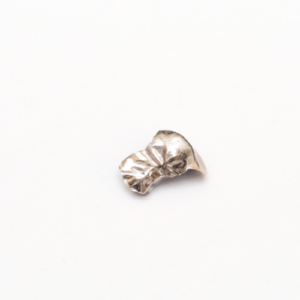HOLISTIC DENTISTRY
Whole Life Dentistry
What is Holistic Dentistry?
Holistic Dentistry is an interdisciplinary approach to addressing patient's needs and goals for optimal health. It includes:
- Nutrition/Diet
- Safe Mercury Filling removal
- Saliva Bacteria Analysis with Microscope
- Posture correction

1. Nutrition/Diet
"Nutrition is the key to success and thriving in health."

To have straighter teeth naturally requires, nasal breathing, correct posture, and the right nutrition.
Having crooked/crowded, decayed teeth means our jaws are not growing well.
Nutrition helps with stronger teeth, facial development, and larger airways.
Starting with pregnancy, what you eat affects both the teeth and structural development in the fetus.
2. Safe Mercury Filling Removal
"Safety is our pride and first priority for our patients."

The importance of Mercury removal safety is very important to me and my staff. The removal of this hazardous vapor and
particles is done accordance to IAOMT’s Safe Mercury Amalgam Removal Technique (SMART) in our clinic, which protects our patients and our staff. The SMART protocol ensures that the patient is covered head to toe with external air or oxygen delivered via a nasal mask or a nasal cannula and medical grade air filters. Patients are given slurry of charcoal, chlorella, or similar adsorbent to rinse and swallow before and after the procedure. Its important to work a naturopath before and after the removal of mercury fillings.
IAOMT has strict guidelines on how to remove Murecey, they have research that shows the effects of Mercury vaopur on on health and how it should be removed safely.
* IAMOT’s SMART protocol is used at our office.
* Here is link for more information : https://iaomt.org/resources/safe-removal-amalgam-fillings/
3. Saliva Bacteria Analysis with Microscope
"Dental plaque analysis is a window into your oral and overall health."

The phase contrast microscope is the latest technology in the fight against gum disease. Gum disease is caused by harmful bacteria in the mouth that attaches to teeth and gums.
With the use of the microscope we identify the harmful bacteria, which cause unhealthy gums that lead to periodontal disease.
implications of unhealthy gums, including risks to chronic inflammation, circulatory and respiratory system, potentially contributing to various systemic diseases such as cardiovascular disease, respiratory disease, diabetes, premature childbirth.
Children and teens love to see the bacteria and understand the harm these bacteria are doing, this can help improve oral hygiene at home.
This is a look at dental plaque under a microscope:
4. Posture Correction
"Your alignment starts with the jaw."

When your teeth are misaligned, they cannot provide enough muscle support in your face needed for chewing and swallowing. These muscles are then forced into a strained position which translates in discomfort throughout the face, head, arms, shoulders and back. The over-worked muscles from an unbalanced bite can result in pain that will materialize in the form of migraines, headaches, earaches, muscles tenderness, facial discomfort, a sore jaw and a multitude of other symptoms.
An imbalanced bite stresses and strains the jaw, creating issues in the joints, muscles, nerves and all its related operations. This can impact the way your mouth functions and can prevent you from fully opening your mouth and limiting your eating, swallowing, chewing and talking ability. A bad bite can have significant wear and tear on your teeth and can radically impact the appearance of your face. Your lips change shape. Wrinkles and creases form and deepen on the sides of your nose and mouth. And your lower lip starts to roll out and jowls begin to appear. Ear congestion, persistent earaches, dizziness, vertigo, ringing or whistling in the ears. . . . these can all be traced back to TMJ. Technically (and medically) here’s what is going on:The over-activity of your jaw can make your ear canal sensitive and can result in a multitude of symptoms. Your ear has two important muscles: the tensor tympani (it attaches to the ear drum, stabilizing it from the excess vibration caused by loud sounds) and the tensor levi palatini (it attaches to the Eustachian tube helping to equalizing pressure within the inner ear…it is what “unplugs” your ears when you chew gum or suck a hard candy in an airplane). Because of jaw misalignment and the over-compensation of these muscles, it can lead to a multitude of symptoms related to your ears. These symptoms are the result of having a strained bite when the jaw is not aligned.
The jaw area is a complex network of muscles and nerves. When the bite is misaligned – muscles and nerves throughout the head, including the ears, can be affected. The most common and obvious effect is persistent ringing or whistling in the ears. It can also lead to:
- dizziness
- vertigo
- ear pain or discomfort (earaches)
- impaired or restricted hearing
- congested or stuffy feeling in your ears
- sinus pain
By stabilizing and realigning your jaw, your bite will be restored back to its normal position, relieving the problems in your ears caused by the misaligned bite.
Posture and Alignment: How to Fix Back and Neck Pain
Most back and neck pains are related to bite. If you are seeing a chiropractor and osteopath for these issues, consider seeing us in addition for only 2 appointments. Read on below to understand why our bite can contribute heavily toward back and neck pain issues.
This diagram below shows what a difference a balanced posture can make on our musculoskeletal system and how we may be experiencing pain as a result of poor posture. Read more about how a misaligned bite can contribute to back and neck pain, as well as chronic headaches.









